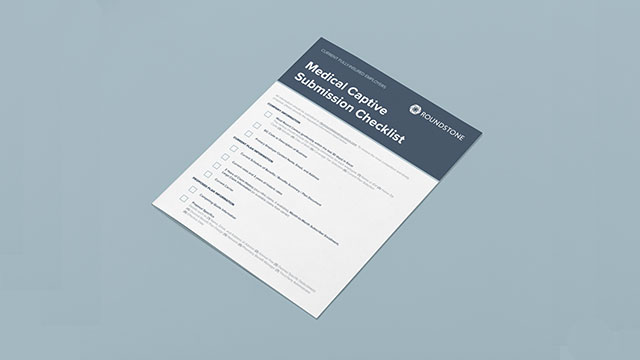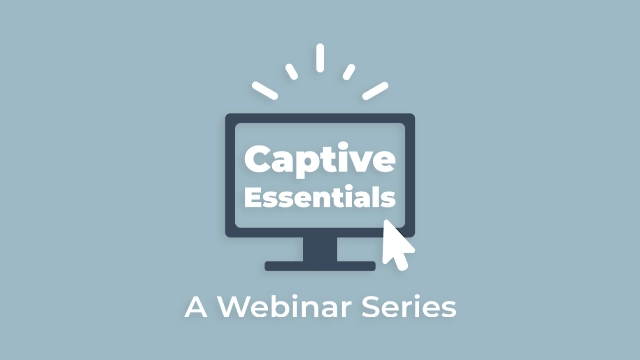Highlights
- Cost containment is critical for curbing skyrocketing healthcare costs for employers.
- Healthcare expenses have risen by 7% in the last year, making cost containment strategies vital to the financial sustainability of small businesses.
- Numerous strategies are available to contain healthcare costs, including patient advocacy programs, generic medications, and employee education.
- Self-funded insurance offers a comprehensive way to manage healthcare expenses through data transparency and partnering with a Third Party Administrator and Pharmacy Benefits Manager.
In healthcare, controlling costs is crucial for employers to effectively manage the increasing expenses of a health benefits program. The goal of cost containment is to find a balance where employees receive high-quality healthcare while keeping costs manageable. This means making smart choices like promoting wellness programs, opting for generic medications, and using data to tailor health plans effectively.
For employers, there’s more at stake than cutting costs — they also need to find efficient ways to keep their workforce healthy and happy without breaking the bank.
Why Is Cost Containment Important to Healthcare?
Managing healthcare costs effectively is essential for employers, particularly given the recent rise in health insurance premiums as healthcare increasingly becomes more expensive. Amid rising inflation, annual family premiums for employer-sponsored health insurance have increased by 7% this year, reaching an average of $23,968.
Workers are now contributing an average of $6,575 annually toward family premiums, an increase of nearly $500 from 2022, representing a significant financial impact on their budgets.
Implementing effective cost containment measures is vital for handling these rising costs. This is critical to maintaining a business’s financial health while offering employees quality and affordable healthcare benefits.
The beauty of self-funded health insurance is you have direct control over your plan. You can implement cost saving strategies, both on a proactive and reactive basis, throughout the year to improve the savings of your health plan.
Under a self-funded stop-loss captive, it’s your plan — you can design and implement it as you wish, with no need to wait until renewal time to make changes. Cost containment is a vital tool of any self-funded health plan to deliver optimal savings without compromising on care quality.
12 Healthcare Cost Containment Strategies to Save Money
So, what can employers do to lower the high cost of healthcare and improve the savings of their self-funded health insurance plan? You can take proactive savings steps with cost containment strategies that lower costs for your company and its employees across the board.
Here are a few examples of cost containment strategies you can use to battle increasing healthcare costs within your business.
1. Well-being Incentives
Employers can take advantage of health insurance providers’ well-being programs to encourage healthier lifestyles among their workforce. These programs often include benefits like reducing the employees’ cost-share obligations, gym memberships, smoking cessation support, and rewards for maintaining a healthy weight.
Integrating these preventive care strategies allows employers to reduce long-term healthcare costs, benefiting their employees’ well-being and the company’s bottom line.
2. Network Management
Insurance companies work with various healthcare providers to create networks that offer medical services at negotiated rates. If you stay within the network your carrier has set up, you’ll likely see lower medical bills, which is a win for everyone.
However, stepping outside this network for care can mean higher bills because those special rates won’t apply. Knowing which providers are in-network can help avoid unexpected costs.
3. Using Technology
For small businesses, using technology is a smart strategy. Digital tools like mobile apps and online customer service portals allow insurance providers to process claims more efficiently and automate standard inquiries. This speed and efficiency translates into lower overhead for insurers, which can mean reduced business premiums.
Under a self-funded health insurance plan, you can use technology like well-being apps or claims data reporting tools to closely monitor and manage employee health trends and expenses. It’s an effective way to access savings typically available to larger organizations with more bargaining power.
4. Providing Incentives for Cost Saving
Health insurance companies often offer rewards, like gift cards or additional paid time off, to encourage policyholders to adopt healthier lifestyle activities like regular exercise, health check-ups, or quitting smoking. These incentives keep employees engaged with their insurance plans and promote better choices.
When your team members make these positive health changes, it often results in fewer health claims later on, which is beneficial for managing insurance expenses. Incentives can be a powerful tool to lower costs and further improve the savings of a self-funded insurance plan.
5. Utilization Review
Consider adopting a utilization review program to save on your company’s health insurance costs. This process involves reviewing the medical necessity and cost-effectiveness of the treatments provided under your self-funded health plan.
A utilization review program helps you avoid paying for unnecessary or overly expensive medical procedures, especially when a cost-effective alternative is available. It ensures that only essential, value-for-money healthcare services are covered by your plan, helping you reduce your overall healthcare spending.
6. Telemedicine
Telemedicine usage has seen a significant rise, with about 74% of people in the U.S. now using these services. Promoting telemedicine offers policyholders the convenience of remote consultations with healthcare providers. This approach is a cost-effective substitute for in-person appointments and can also help lower the frequency of high-cost claims associated with urgent care visits.
7. Generic Medications
Employers can manage high prescription drug costs by encouraging the use of generic medications. Generics offer significant savings — they’re usually 80% to 85% cheaper than their branded counterparts — have the same active ingredients, and are equally effective as expensive brand-name versions.
Employers can reduce pharmacy costs by educating employees about the safety and efficacy of generics and encouraging their use. This helps manage the company’s healthcare budget and eases the financial burden on employees, making healthcare more affordable.

8. High-Deductible Health Plans (HDHPs) with Health Savings Accounts (HSAs)
To better manage your company’s healthcare expenses, consider a High Deductible Health Plan (HDHP), which offers the benefit of lower monthly premiums. HDHPs are designed with higher deductibles, meaning that while your employees may pay more for individual healthcare services, the overall premium costs for your business are reduced.
To complement an HDHP, use Health Savings Accounts (HSAs), where employees can save money pre-tax for future medical expenses. This strategy provides tax savings and promotes thoughtful healthcare spending, potentially reducing your company’s healthcare expenditure.
9. Direct Primary Care
To keep your employees healthy and save on future healthcare costs, consider adding preventive care to your company’s self-funded health insurance plan.
A Direct Primary Care (DPC) program is a great option that lets you pay a flat monthly fee per employee, so they can see their primary provider when they need to at no cost to them. DPC increases the likelihood that they will get regular check-ups, immunizations, and screenings that detect health issues early, potentially avoiding serious illnesses and more expensive care later.
10. Chronic Disease Management
Clinical care management programs are another cost-effective way to reduce healthcare costs. These programs help covered employees to effectively manage chronic health conditions such as diabetes and heart disease.
This translates into potentially lower healthcare costs for employers and reduced absenteeism. Assisting employees in managing their health also contributes to a healthier, more productive workforce.
11. Employee Education
Educating your employees about their health insurance coverage can go a long way toward cutting healthcare costs. Make sure they understand the details of their plan, such as copayments, deductibles, and network restrictions. This knowledge empowers them to make better healthcare choices and avoid unnecessary costs.
This helps employees make the most of their benefits and can reduce costs for both the employees and your company. If you use a self-funded insurance plan, your HR team can collaborate with a specialized third-party administrator (TPA) to create educational materials and communicate plan benefits to employees.
12. Self-Funding
Self-funded insurance is an effective cost containment option for employers. The self-funding model works by setting aside funds to pay employee health claims directly, ditching traditional fixed insurance premiums. With self-funding, you choose a TPA to handle claim processing and plan administration, making life easier for your HR team.
You also team up with a pharmacy benefits manager (PBM), who helps keep medication costs in check by negotiating drug prices and handling pharmacy benefits. This setup allows you to tailor healthcare plans to your workforce’s needs and adjust as necessary.
To keep risks low, you can get stop-loss insurance as a safety net against catastrophically high medical claims. If there’s money left over in the fund at renewal time, it goes back into your company’s account and can be used to cover future healthcare costs. The beauty of self-funding is you get to keep any unused healthcare spend, which a traditional, fully insured provider would otherwise pocket as profit.

Self-Funding with Roundstone
With Roundstone, you can use a self-funded health insurance model called a group medical captive, also known as a stop-loss captive, which is more budget-friendly and adaptable than traditional insurance plans. This arrangement puts you in the driver’s seat, giving you clearer insights and greater control over what’s impacting your company’s health insurance costs.
Our self-funded plans provide stop-loss captive members with detailed data on healthcare spending and trends within their coverage. This data transparency lets you see exactly where your healthcare dollars are going through real-time claims dashboards.
With this information, you can identify cost drivers, manage risks more effectively, and uncover opportunities for cost containment that are usually unavailable in fully funded plans. Access to your spending patterns helps you make data-driven decisions to design a customized healthcare plan, invest in preventative programs, or adjust benefits to align with your employees’ healthcare needs.
Thanks to the self-funded stop-loss captive, Roundstone’s model empowers businesses to take control of their insurance costs and incentivize smarter healthcare spending.
Take Control of Your Healthcare Costs With Roundstone
Roundstone’s self-funded insurance offers employers a powerful way to reduce healthcare costs. With tools like the CSI Dashboard and expert support, you gain control and insight into your spending. Ready to save on healthcare and support your employees better? Contact us to see how Roundstone can help.
















